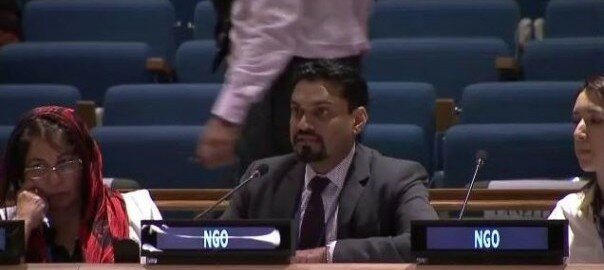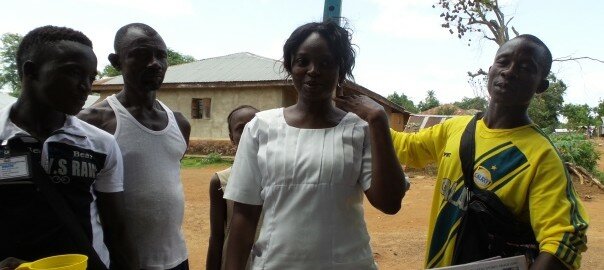END7 has just announced the members of the 2015-2016 Student Advisory Board. Congratulations to all of our new and returning board members, and our sincere thanks to everyone who applied! The Student Advisory Board will mentor other student leaders and advise END7 on student engagement for the entire school year. By contributing their time and expertise to the activities of the Board, representatives play a major role in charting the course of the END7 campaign.
As world leaders prepare to finalize the Sustainable Development Goals (SDGs) this September — and their indicators in March — we asked students to tell us how they would make a case to world leaders to include a goal to control and eliminate neglected tropical diseases. Read END7 Student Advisory Board representative Simran Dhunna’s response below.
After the Ebola outbreak in West Africa, the world suddenly became acutely aware of the gaps that exist in global health governance and health systems. The World Health Organization demonstrated that there are deep-rooted structural limitations in its own system of finance and accountability. Furthermore, the infectious disease events of this year, including but not limited to Ebola, have shown the debilitating effects of neglect on populations without access to healthcare. For example, we’ve stood by as civil unrest has continued to exacerbate the spread of NTDs, such as the outbreak of Dengue in Yemen. Within and beyond the 17 diseases that the WHO designates as “Neglected Tropical Diseases,” lies an unfortunate truth: communities and the endemic diseases they suffer from are neglected because they are trapped in a cycle of poverty. Thus, the case I would make to world leaders rests on this principle: neglected diseases do not function in a vacuum. Rather than being an isolated public health issue, NTDs are multifaceted, in that they interact with virtually every aspect of society.
The SDGs, naturally, include an emphasis on poverty and climate change. NTDs encompass both of these topics. Firstly, it has been well established through clinical and academic literature that neglected communities remain generally at the lowest tiers of socioeconomic status. In essence, diseases such as sleeping sickness or lymphatic filariasis disproportionately affect the poor much more than every other socioeconomic class. This is not a coincidence. Individuals who suffer from NTDs have nearly every facet of their lives affected, such that they cannot pursue their most basic goals and aspirations, like an education or sustainable employment. To the world leaders, I would say that NTDs are so interwoven with issues of poverty, that to not include diseases of poverty in our global agenda would be a disservice to the SDG that aims to eliminate poverty. In other words, our strengthened efforts to eliminate NTDs could result in more children going to school, getting a job and having prosperous lives. Removing this massive health burden can be the key to lifting millions of individuals, and neglected communities, out of poverty.
One of the other SDGs concerns itself with climate change. The unique characteristic about neglected tropical diseases is that they profoundly interact with the environment. Many of the NTDs are zoonotic or parasitic/helminthic diseases. Thus, there is an inevitable cause-and-effect relationship between a community’s environment and its state of health. Just as several global health professionals use a ‘One Health’ perspective, it’s essential to recognize the unique animal-human interface that is so inherent in NTDs. Changing climates mean that the ecology and evolution of vectors and other pathogenic organisms is also constantly fluctuating. The migration patterns of mosquitos, for example, could be spreading an outbreak to other areas not equipped to deal with it. We already see the rapid development of certain diseases like MDR-TB, in which organisms are spreading resistance genes at a faster rate due to environmental factors. Moreover, weaknesses in environmental systems, such as sanitation and sewage, lend themselves to further public health concerns. Hence, NTDs are not isolated to one community and one clinical issue – they are affected by the agricultural practices of a given region and the environmental policies that govern whether individuals have access to clean water. The ecology and environment of humans, which is undeniably affected by climate change, is a fundamental contributing aspect of NTDs. Including climate change in the SDGs necessitates that NTDs also be addressed, because one is a central causal factor of the other.
Finally, to the world leaders I say this: having broad goals is admirable, but having achievable goals is necessary. Campaigns like END7 demonstrate the austerity in addressing NTDs: medications that eliminate certain neglected diseases exist. There are simply no systems in place for neglected communities to access them. I would implore the world leaders to consider the feasibility of adding NTDs to the Sustainable Development Goals, because eliminating NTDs can be done through appropriate dissemination and implementation of treatment programs, such as deworming initiatives.
The elimination of NTDs is very much a reality in the future. The problem lies in the lack of existing frameworks to address them: there is limited global commitment to eliminating NTDs, and a lack of incentive to invest R&D into them. What I see is a gap in commitment to a worthwhile cause, one that demands as much attention as any other global health or development issue. Dedicating a Sustainable Development Goal to ending neglected tropical diseases is not only an achievable target – it is a moral imperative for world leaders to act upon.
END7 Student Advisory Board representative Simran Dhunna is a junior studying microbiology and global health at the University of Toronto.




